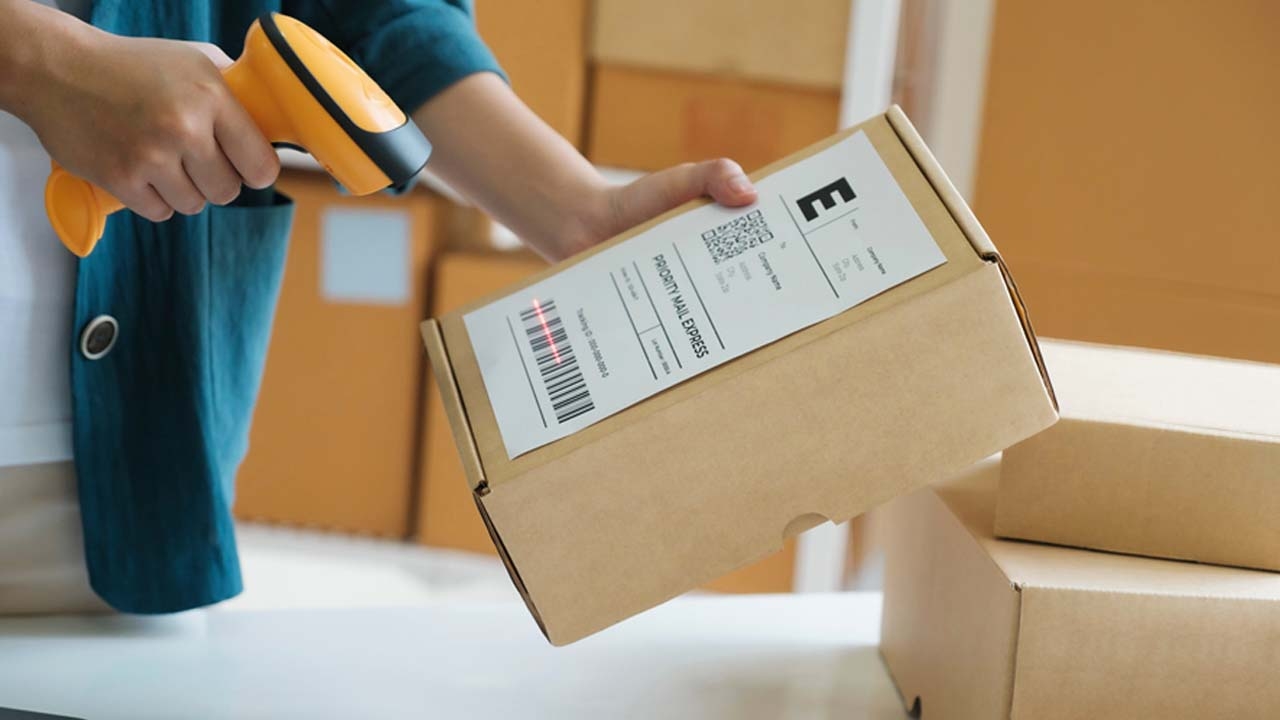SpearEarth wins big

PS label specialist Spear wins big with its
Spear, the beverage-focused, PS label specialist based in
President Rick Spear says, ‘We have always been an environmentally sensitive business, but it has only been the last three years that we have seriously increased our focus.’
Dave Dickerson, director of Lean Six Sigma, comments: ‘Lean Six Sigma is the obvious platform to drive environmental change. We draw on its methods to continually improve product quality and business processes to reduce waste and increase operational efficiencies. Since Lean is a process that’s focused on the measurement of anything and everything, and has accountability embedded within the system, it’s only natural to make sustainability a part of the lean manufacturing process. The required metrics dovetail nicely with process control.’
‘At first the program started as a way to differentiate,’ Dan Muenzer, global marketing VP, explains. ‘Now it is also a way to increase the bottom line. SpearEarth is about creating an engine. We have people that make it work, who know continuous improvement and know how to place measurements around daily operations.’ Ten percent of the Spear work force is Green Belt trained.
Each year Spear conducts setup standardization and press uptime projects, yielding significant annual savings. Each operation has an active project queue and using Six Sigma as a guide, Spear has achieved a 2 percent yield improvement, reducing process waste by 55 tons annually.
In order to drive the
SpearEarth tackles a number of key areas that assist the business in achieving its goals: solid waste reductions, matrix recycling, advanced materials development, supply chain efficiency and external validation. It is a model of an effective
Solid Waste Reduction
- Liner recovery
Through both internal and external initiatives, Spear has reduced its waste to landfill deposit by a total of 10,725 tons over the last two years. The most impactful way that Spear achieved this reduction was by connecting its customers with recycling groups that can collect expended release liner after application.
The global consumption of PS label release liner is approximately 1.4m tons. North America and
Spear has motivated its customers to participate in a PET liner collection program which has recovered seventy-five percent of the volume of liner supplied by Spear, salvaging 7.8m pounds of Spear PS liner from landfill. Spear has also developed a proprietary collection system that it hopes will allow for the remaining 25 percent to be recovered. This will require Spear to find solutions for its smallest customers. It is not cost-effective or efficient to pick up small quantities of liner.
‘It is imperative both financially and for the environment to have a full truckload of liner picked up,’ Dickerson says. Cal Frost, CEO of Channeled Resources Group, knows this obstacle well. He has been working diligently for the last three decades to facilitate a solution for liner waste recovery. CRG currently has nine service centers throughout North America, with about the same number in
Spear was able to facilitate liner pick up for a majority of its clients because of the large amounts of release liner used by each one. Sixty percent of Spear customers use PS labels, and a good percentage have some of the highest average run lengths found in the industry. The larger the customer, the more liner expended, giving opportunity for cost-effective alternatives to landfill and bottom-line savings.
Muenzer explains: ‘At its outset we took the project to AB (Anheuser Busch) and presented the two-pronged benefits – money and value. We wanted to know if they’d be interested in working with us as a partner for this business and after some review, AB accepted the proposal. Their decision is what set off the growth of the project.’
Frost estimates that the collection and recycling rate is higher for filmic liner, maybe 25 percent, but only because of the huge amount generated by one or two players in the beer industry that participate in liner recovery programs.
This higher rate could be attributed in part to Spear’s effort in bringing a liner recovery solution to its customers as an add-value service. Spear estimates that twelve of its customers’ locations have enlisted in a liner collection program. About half of these plants use a proprietary source where the spent liner goes to recycling facilities for re-use as a secondary product or for re-use as energy.
Most of Spear’s big clients are already involved, including Heineken. However, it has been more difficult to persuade clients that use co-packers. Spear believes that the benefits will eventually convince more to partake.
‘The financial benefits combined with the capability to add more total value to their organizations will move them,’ Muenzer says. With growing pressure on a brand’s social responsibility, successful participation in such a project will add sparkle to a corporation’s CSR report.
In the case of the smaller customer, Spear acts as a broker to coordinate pick-ups. Bacardi, for example, takes advantage of this option. It is about the smallest customer of Spear’s that can participate in a liner collection program and remain viable. Ideally, Spear would like to extend this service to European clients, but continue to find quantities involved to be prohibitive.
- Size matters
Spear turned to the PET recycling community as another way to reduce the impact of PS labels on the environment. It works closely with Faith Group, a PET materials trader and processor with locations in
The converter was able to realize significant landfill reduction by introducing its customers, especially the smaller players, to this concept. Dickerson says, ‘The waste stream has four times as many pounds of plastics outside of liner. We have shown our customers what’s capable with other packaging scrap, such as strapping, material core, shrink wrap and more. When you account for other non liner plastics to the total quantity, removal becomes easier to justify for small users.’
Overall, the facilitated collection and recycle of additional packaging scrap prevented 15m pounds of waste from going to landfill.
SpearPET
Mixing BOPP film with PET in the recycling process impairs the clarity of the plastic, making it undesirable for re-use in new bottles. Spear collaborated with its material suppliers to create SpearPET, a BOPP film matched with a proprietary adhesive that releases from the PET flake during the recycling process, separating the BOPP face stock from the stream and maintaining the usability of the PET.
Muenzer says, ‘This technology allows PET to be reused with acceptable clarity and haze values. We’re the first to introduce a PS label that can do this.’ The Association of Post Consumer Plastic Recyclers gave the company an award for the material.
Matrix waste
Matrix represents 85 percent of the company’s operational waste. In collaboration with outside recycling companies, such as International Paper Products Corporation, Spear currently turns 42 percent of its matrix waste into bio-mass fuel blocks or pellets. This percentage represents 5.7m pounds of solid waste.
The widely dispersed locations of matrix recycling facilities have made the system a non-option for most of the industry. The Spear executive team is working with its current processing partners, other vendors, and industry experts to find a local solution for its remaining percentage of matrix waste. It would like to see a reliable plant successfully operating near its headquarters as soon as possible.
Net weight reduction – film and paper
To reduce total material consumption and waste, Spear partnered with Avery Dennison FRNA to develop thinner PS film with the same quality as the industry standard. The thickness of the components in a standard laminate are 2.0 mil BOPP face stock, 0.5 mil adhesive and 1.0 mil PET liner.
Spear has successfully transitioned over sixty percent of its customers to the 17 percent thinner Gen 1 laminate, directly diverting 5m pounds of PS material from going to landfill. Gen 1 has a 1.6mil face stock, 0.4mil adhesive, and 0.9mil liner. ‘We anticipate a further reduction of 1.5m pounds once we switch our remaining clients to Gen 1,’ Muenzer says.
This reduction not only restricts the amount of solid waste produced in the manufacturing process, but also limits energy consumption. More Gen 1 labels fit onto each roll, allowing Spear to ship more labels per truckload. Dickerson explains, ‘Due to the shipping efficiencies of a thinner label, we have reduced our annual shipments by 300 full truckloads.’
Spear is actively testing Gen 2, a 1.0 mil, 0.3 mil, 0.75 mil material, which will allow for a further reduction in land filled pounds.
At Spear’s
Every bit counts
Spear cut 600,000 pounds of waste from its operations by utilizing supplier-based programs such as Fasson’s Exact. Programs such as these reduce off-cut, trim and matrix waste. Educating customers on efficient design to fill the web space played a role in this landfill avoidance too.
Some changes in secondary packaging platforms and configurations removed 550,000 pounds of unnecessary material from the Spear supply chain. It switched nearly half of its clients from bleached corrugated packaging to box-less pallets, and through re-configuration, ships 20 percent more labels per pallet to its Latin American accounts.
Spear has also designed a new corrugate shipping box where the corners are removed. ‘We’ve challenged our vendors to reduce the corrugate in our boxes by 15-20 percent with this new design,’ Muenzer explains. ‘The design offers a unique look, reduces environmental impact and increases cost savings.’ The company hopes to find a viable vendor by the end mid-year.
Full-fledged recycling programs within each of its facilities recover 54 percent of non-matrix operational waste, including aluminum, steel, copper, corrugate, paper and plastic. Together these programs recovered over 500,000 pounds of waste last year. Additionally, Spear installed vertically integrated, closed loop solvent recovery systems that virtually eliminate the disposal of solvents. The systems reclaim 3.5m pounds of solvent each year.
The distribution chain: freight & logistics = energy
SpearEarth is complementary to the ‘SpearSystem’, a consultative approach where the customer is supported throughout the label process, from design and production, to application, filling and distribution. ‘We’ve added more value to our services with SpearEarth. It gives us more power to insure our customers’ goal of product success,’ Muenzer says.
Reduction in operational waste directly translates to freight mile savings in the distribution chain. Freight miles are measured as a ton-mile, equivalent to one ton of freight moving one mile.
Spear constantly audits its logistics systems, calculating miles, number of shipments, and time to evaluate efficiency and effectiveness. Its goal is to optimize loads and reduce freight miles wherever possible. All of the aforementioned programs within SpearEarth have eliminated 8.7m ton-miles from the company’s delivery and distribution chains.
A ton-mile measures energy efficiency and is a necessary measure to construct carbon emissions data. Spear calculates ton-miles and kilowatt hours saved according to Energy Star guidelines into CO2 emissions using http://www.carbonfootprint360.com/. The company has saved a total of 10,142 tons of CO2 since SpearEarth was put into place. It follows the Carbon Disclosure Project guidelines in the
SpearEarth is an exemplary model of how to build the modern converter’s
This article was published L&L issue 1, 2010
Click here for more stories about Spear on L&L.com.
Stay up to date
Subscribe to the free Label News newsletter and receive the latest content every week. We'll never share your email address.


